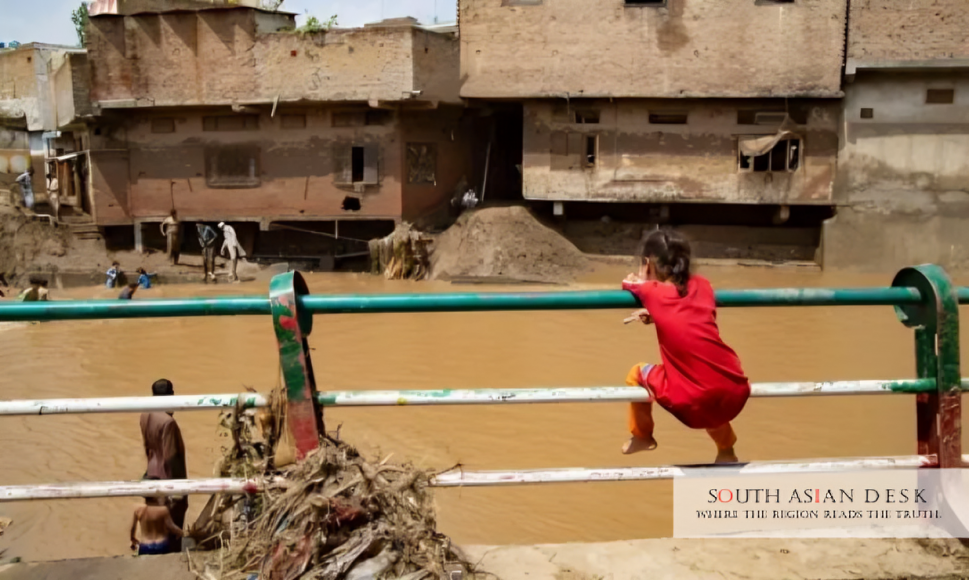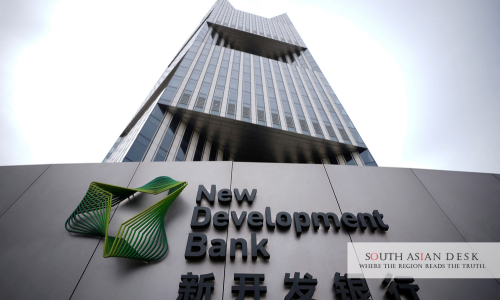More than 4.2 million people across 18 districts in Punjab province have been affected by severe monsoon floods 2025 since late June 2025, with the Prime Minister announcing a doubling of ex-gratia compensation to PKR 2 million per deceased family member during a Senate briefing on Friday, September 26, 2025.
The floods affecting 4.2 million in Punjab underscore Pakistan’s vulnerability to climate-driven disasters, straining resources in South Asia’s most populous province and highlighting the need for resilient infrastructure to safeguard livelihoods and public health.
Floods Affect 4.2 Million Across Punjab Districts
The recent monsoon deluges, which began intensifying in late June 2025, have triggered the worst riverine flooding in Punjab in decades, impacting over 4.2 million residents in 18 districts. According to a Rapid Needs Assessment conducted from September 8 to 18, 2025, by the National Disaster Management Authority (NDMA) in collaboration with the United Nations Office for the Coordination of Humanitarian Affairs (UNOCHA), the crisis has displaced approximately 2.8 million people due to flooded, damaged, or destroyed homes.
Muzaffargarh district bears the heaviest brunt, with over 1.1 million affected accounting for more than a quarter of the total figure where floods affect 4.2 million. Other severely hit areas include Jhang (646,000 people, or 15.3 per cent), Bahawalpur (514,000, or 12.2 per cent), Khanewal (397,000, or 9.4 per cent), and Multan (347,000, or 8.2 per cent). The assessment covered 1,928 mouzas in districts such as Vehari, Bahawalnagar, Hafizabad, Okara, Chiniot, Gujrat, Rahim Yar Khan, Kasur, Sialkot, Mandi Bahauddin, Narowal, Dera Ghazi Khan, and Gujranwala.
Nationally, the floods have affected over 5.8 million people, with Punjab comprising the largest share at 4.2 million, followed by Khyber Pakhtunkhwa at 1.6 million, as per NDMA data cited in UNOCHA’s flash update on September 9, 2025. Punjab Relief Commissioner Nabeel Javed reported that more than 4,100 villages have been inundated since late August 2025, exacerbating the humanitarian toll.
Widespread Damage to Housing and Infrastructure
Of the 161,000 houses assessed, 115,700 were partially damaged and 46,000 fully or severely damaged, with 93 per cent of locations reporting housing impacts. The highest incidences occurred in Muzaffargarh, Rahim Yar Khan, Khanewal, and Jhang. Health facilities have not been spared, with 395 damaged, 315 partially and 80 fully or severely affecting critical services in Gujranwala, Bahawalnagar, and Okara. Bahawalnagar alone saw 64 facilities impacted, followed by Jhang (55) and Muzaffargarh (46).
Education has suffered significantly, with 667 schools damaged, 54 per cent of which were girls’ schools. As many as 217 schools were repurposed as evacuation centres, disrupting learning for 101,263 students. Sialkot reported the most damage (210 schools), followed by Jhang (110), Gujrat (83), and Muzaffargarh and Kot Addu (82 each). Water infrastructure faces a dire situation, with 97,000 schemes damaged, including 48,500 fully destroyed; 60 per cent of these were in Muzaffargarh, 12 per cent in Jhang, and 10 per cent in Bahawalpur.
PM Doubles Compensation Amid Rising Casualties
In a key development addressing the human cost, Prime Minister Shehbaz Sharif has doubled ex-gratia assistance for families of flood victims from PKR 1 million to PKR 2 million per deceased individual. This announcement, with a projected financial impact of PKR 2.033 billion, was conveyed to the Senate Standing Committee on Cabinet Secretariat during its meeting on Friday, September 26, 2025, chaired by Senator Rana Mehmoodul Hassan.
The briefing by NDMA Chairman Lieutenant General Akhtar Nawaz highlighted that the 2025 monsoon floods have claimed 998 lives and injured 1,062 people nationwide, with figures expected to rise. Earlier Senate records noted around 1,000 casualties, aligning with the PM doubles compensation measure to provide immediate relief. Approximately 3 million people were rescued or evacuated between June 26 and September 19, 2025, per NDMA reports.
Health and Livelihood Crises Intensify
Health risks are mounting, with 64 per cent of assessed villages reporting malaria cases, alongside outbreaks of skin infections, diarrhoea, and dengue, linked to compromised water, sanitation, and hygiene conditions. Livelihoods, predominantly agrarian, have been shattered: over 85 per cent of communities in affected districts depend on crop farming, and more than 70 per cent on livestock. Floods have destroyed crops, killed animals, and disrupted planting cycles, plunging areas into food insecurity. Most households hold food stocks for less than a week, with critical shortages in Multan (81.7 per cent), Bahawalnagar (76.2 per cent), Muzaffargarh (74 per cent), and Bahawalpur (61.5 per cent).
Background of Monsoon Floods 2025
Pakistan’s 2025 monsoon season has been unusually severe, with heavier-than-average rains since June 26, 2025, swelling rivers like the Chenab, Panjnad, Sutlej, and Ravi to dangerous levels. Cities such as Lahore, Multan, and Dera Ghazi Khan face urban flooding risks, prompting emergency declarations, including in Multan on September 9, 2025, where 140,000 people were impacted. This builds on historical patterns, though the scale where floods affect 4.2 million marks a stark escalation in Punjab.
What’s Next for Relief Efforts
Urgent priorities include shelter and non-food items such as tents, tarpaulins, galvanised iron sheets, plastic sheeting, and winterisation kits comprising blankets, bedding, mats, shawls, mosquito nets, and warm clothes. As recovery unfolds, sustained interventions will be crucial to mitigate long-term effects from the floods affecting 4.2 million, with PM doubles compensation serving as a vital first step in rebuilding trust and resilience.
Published in SouthAsianDesk, September 27th, 2025
Follow SouthAsianDesk on X, Instagram, and Facebook for insights on business and current affairs from across South Asia.






